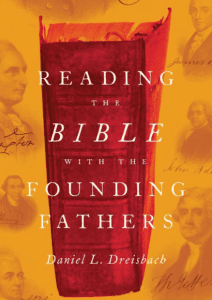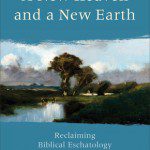Francis Collins, in the brief stretch between stints as head of the Human Genome Project at NIH and, now, Director of NIH, put together a book, Belief: Readings on the Reason for Faith, an anthology of readings he finds helpful in discussing rational reasons for belief in God. The anthology is, in some sense, a supplement to his book The Language of God. The essays and excerpts in this book will not provide a proof for the existence of God – no such proof is possible. But they do provide arguments and reasons for belief.
 The book includes an excerpt from a collection of essays by Dorothy L. Sayers: Christian Letters to a Post-Christian World. In this essay entitled “A Vote of Thanks to Cyrus” Sayers reflects on the way we classify different kinds of literature – in particular the implicit, even unconscious, distinctions we make between the bible, classics, and history.
The book includes an excerpt from a collection of essays by Dorothy L. Sayers: Christian Letters to a Post-Christian World. In this essay entitled “A Vote of Thanks to Cyrus” Sayers reflects on the way we classify different kinds of literature – in particular the implicit, even unconscious, distinctions we make between the bible, classics, and history.
I owe a certain debt to Cyrus the Persian. I made his acquaintance fairly early, for he lived between the pages of a children’s magazine, in a series entitled Tales from Herodotus, or something of that kind. … Cyrus was pigeon-holed in my mind with the Greeks and the Romans.
So for a long time he remained. And then, one day, I realized with a shock as of sacrilege, that on that famous expedition he had marched clear out of Herodotus and slap into the Bible. Mene, mene, tekel upharsin – the palace wall had blazed with the exploits of Cyrus, and Belshazzar’s feast had broken up under the stern and warning eye of the prophet Daniel. (p. 99)
The image above, obtained from wikipedia where you can find it with better resolution, is the purported tomb of Cyrus located in modern day Iran. For Sayers the connection between history and the Bible resulted in a reordering in thinking about scripture and the nature of the Bible in the text we have. It became a real book not a magic book separated from real life.
Has your view of the Bible changed through the years?
If so what factors have caused these changes? For better or for worse?
 Dorothy Sayers describes the reordering required by the realization that she could not neatly separate “Bible” from “classics.” The book of Esther and the identification of King Ahasuerus with Xerxes provided another such example. The Bible is not something special and separate. History is all of a piece and the Bible is grounded in the same soil as the classics. This is not to eliminate God from the picture by any means – but to realize that God interacted with the real world, their world and our world.
Dorothy Sayers describes the reordering required by the realization that she could not neatly separate “Bible” from “classics.” The book of Esther and the identification of King Ahasuerus with Xerxes provided another such example. The Bible is not something special and separate. History is all of a piece and the Bible is grounded in the same soil as the classics. This is not to eliminate God from the picture by any means – but to realize that God interacted with the real world, their world and our world.
Most children, I suppose, begin by keeping different bits of history in watertight compartments, of which “Bible” is the tightest and most impenetrable. But some people never seem to grow out of this habit – possibly because of having never having really met Cyrus and Ahasuerus (or Xerxes). Bible critics in particular appear to be persons of very leisurely mental growth. Take, for example, the notorious dispute about the Gospel according to St. John. (p. 100)
Sayers continues on to describe an approach to the Gospel of John and how those who practice Biblical criticism have taken an approach long since reject in the study of other literature from the classical period. She pokes fun at some of the arguments and what she sees as their shortcomings and forays into the irrational. Biblical criticism was, she found, still locked into deconstruction dismantling and distrusting the text long after other areas of study had emerged from the fad.
When it came to the Bible, the spirit of destruction was the more gleefully iconoclastic because of the conservative extravagances of the “verbal inspiration” theory. But the root of the trouble is to be found, I suspect (as usual), in the collapse of dogma. Christ, even for Christians, is not quite “really” real – not altogether human – and the taint of unreality has spread to His disciples and friends and to His biographers; they are not “real” writers, but just “Bible” writers. (p. 103)
The message of scripture and the power of the incarnation is in the real humanity of Christ, the notion that God became man, that God speaks to us in scripture and through the Spirit in a fashion that is grounded in everyday reality. The Bible is not a magic book, not a special language, not dictated from on high (with a few exceptions perhaps) – but a record from human perspective on the interaction of God with his creation. Sayers concludes…
“Altogether man, with a rational mind and a human body -.” It is just as well that from time to time Cyrus should march out of Herodotus into the Bible, for the synthesis of history and the confutation of heresy. (p. 104)
Sayers’ essay here hits a nerve for me, because there have been several experiences where the connection between bible and reality has been brought home. In sermon or Sunday school the Bible is cute stories or bits of wisdom, or magic book … but this is a distortion. The bible is a profound book – but grounded in real life.
What do you think – have there been instances of realization that brought the Bible to life?
If you wish to contact me directly you may do so at rjs4mail[at]att.net
If interested you can subscribe to a full text feed of my posts at Musings on Science and Theology.
The inscription above found in eastern Turkey is attributed to Xerxes (image from wikipedia where a larger version can be found).
According to the caption from wikipedia in Old Persian, Babylonian and Elamite, it says (roughly):
Ahuramazda is the great god, the greatest god who created the sky and created the land and created humans Who gave prosperity to the humans Who made Xerxes king King of many kings, being the only ruler of the totality of all lands. I am Xerxes, the great king, the king of kings, the king of the lands, king of all the languages, king of the great and large land, the son of king Darius the Achaemenian. The king Xerxes says: “the king Darius, my father, praised be Ahuramazda, made a lot of good, and this mountain, he ordered to work its cliff and he wrote nothing on it so, me, I ordered to write here. May Ahuramazda protect me, with all the gods and so my kingdom and what I have done.”











